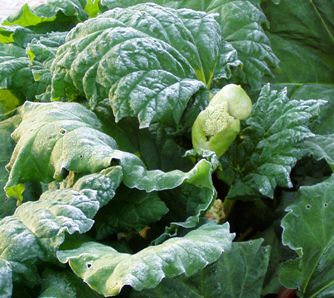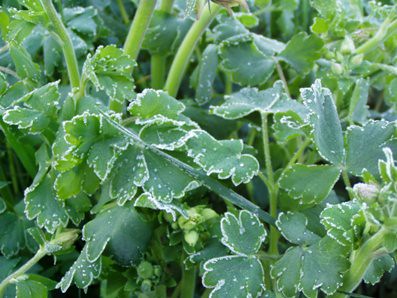 Gardener’s Blues
Gardener’s Blues
Woke up this morning, it was 28 degrees…
Yes, I woke up this morning, it was 28 degrees
Frost was all over my berries…
The apple blossoms were frozen on the trees…..
Mmmmhmmmmm…yeah…
Well, Aunt Toby did wake up this morning and it WAS 28 degrees F. Actually, I woke up yesterday morning and it was 28 degrees then too. It’s May in Upstate New York, but when you get one of those Canadian ‘traveling cold air masses’, it doesn’t matter when it is, it gets a whole lot colder south of the border. A couple of weeks ago, we had temperatures approaching 90. It was absolutely horrific – pushed the trees and plants terribly up here, so when this air mass started to flow down a couple of days ago, it caught trees, bushes and plants out in bud and blossom way before they ordinarily would have been. And frankly, there is not much you can do, unless you are a commercial grower and have the equipment to perform some of the magic that will protect whole fields of fruit trees and bushes, etc.
But I’m figuring that I’m talking to people like the DH and moi, who have a garden, of varying size, and who may or may not have been thinking about frost. How much damage you get depends on what plants they are, how tender or hardy they are (rhubarb is hardy; tomatoes are…not), how cold it is, how much moisture is in the ground(and hence in the plant), if there is any wind. There are a whole flock of factors out there that effect whether or not your plants are going to be damaged and how much damage you are going to have.
If YOU woke up this morning and the temperature was 28 degrees and did not do a darned thing to your garden last night, the first thing you can do (it’s limited in effectiveness, but it can also help a teeny bit) is to run out before the sun comes up and water the plants really well before the sun hits them. The effectiveness is really limited but if there has been only a little frost damage, it may limit how much damage you do get. If you missed it and walk out and the sun is up and your garden is melting faster than the Wicked Witch of the West after that bucket of water got thrown on her (“I’m melting, melting..oh, what a world…”), well, I’ve got to tell you that your best bet is…to let the thing just go, dig up everything that is damaged, throw it on the compost heap with some dirt on it and plant again. By the way, as an fyi, that ‘melting’ thing in the garden is caused by the freezing temperatures causing the water inside the plant cells to expand (because that is what ice DOES), thus exploding the cell walls inside the plant and …”I’m melting, melting..”
But if you are not going to throw in the gardening towel, do a couple of things.
Think a little bit about what is going to happen between now and your ‘frost free time’. Here Chez Siberia, the rule of thumb is that we won’t get any more frosts after Memorial Day Weekend. That’s what passes for local ‘gardeners’ wisdom’. I’m here today to tell you that – this is bunkum. Due to geography and topography, the DH and I have seen tender things in our garden unwind the mortal coil in killer frosts all the way into the second week of June and get killed off in September while we still have a huge crop of green tomatoes. On the other hand, though, with a soil thermometer, we’ve been able to get seedlings of hardier things like broccoli and lettuce into the ground in April.
That means that there is a window of opportunity for us to on the one hand take advantage of weather between April and the first week of June – a whole 6-8 weeks. And, on the other hand, it’s a window of opportunity for us to lose everything. So, how do we protect our plants? Here are a few things we do:
1) For tender things like tomatoes, eggplants, peppers, we choose the shortest season varieties that taste good. If the word “Alaska” is in the variety’s name, that’s a good clue that we have a shot at maturing veggies before we get caught short with an early killer frost.
2) We make sure that the soil in the beds is moist. Moist soil can keep plants warmer by up to 5 degrees, which actually beats even the heaviest row covers. So, we start with good moisture and good moisture holding capacity, which means that we always have a lot of organic material – compost – in the beds.
3) We have some sort of row cover out there next to the beds at all times. Row covers do you zip good if they are packed away in the garage or the basement. We keep them rolled up neatly next to the beds. If we were growing commercially, I’d use hoops on the beds for even more efficient protection. Throwing old sheets etc. on garden beds is really not that effective – any moisture in the air will cause the sheets to literally weld themselves with ice to the plants, and they will get damaged anyway. Protection that is held slightly away from the plants is much more effective.
4) If we get caught short and the weather report says ‘imminent frost tonight’, we run out with the hose and spray the living daylights out of everything. “Imminent frost’ usually means that some sort of Canadian cold air is rushing down from the north. Our problem is not going to be clear skies and the heat radiating off the earth; it’s going to be cold air moving in, winds, etc. We’ve had pretty good luck with spraying our apple trees really well. It sometimes will form ice right on the trees and will save some of the blossoms.
5) At the other end of the year, you just have to deal with it. At that point, we have huge plants, filled with tomatoes, etc. out in the garden. A certain amount of coverage can help there. We also bow to the inevitable and have one bush type tomato in a five gallon bucket and we grow peppers exclusively in plastic milk jugs (the soil Chez Siberia just does not get warm enough to coax peppers to set flowers and fruit – in plastic jugs on our black asphalt, their ‘feet’ are warm enough). These are portable and we can protect them on the deck or even drag them inside the front door if need be.
Gardening is like baseball; there is “always next year” – but a little planning before you put things in can prepare you for those weather reports.
